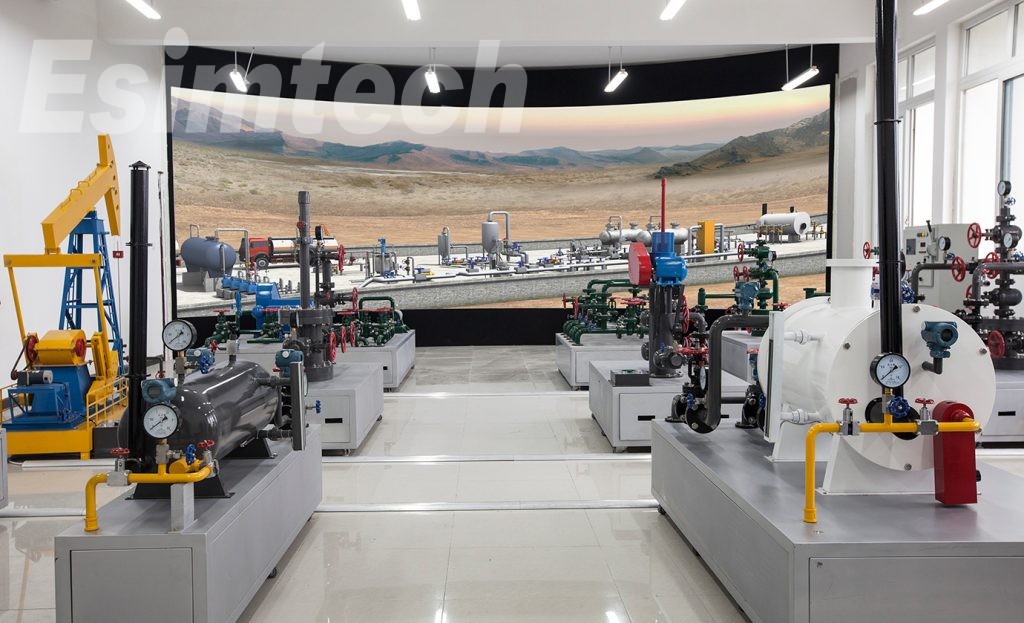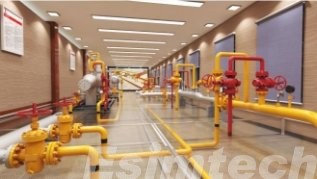Unleashing the full potential of oil recovery from reservoirs remains an unceasing pursuit within the oil and gas industry. As traditional extraction methods hit their limits, engineers and researchers are embracing innovative technology to optimize the recovery process. The Oil Recovery Simulator, a cutting-edge software solution, is reshaping oil recovery strategies through sophisticated modeling techniques. This article delves into the depths of the Oil Recovery Simulator, examining its core features, advantages, real-world success stories, and transformative impact on the petroleum industry.

Unveiling the Oil Recovery Simulator
The Oil Recovery Simulator stands as a comprehensive software program designed to model and simulate oil recovery operations. Leveraging state-of-the-art reservoir simulation methodologies, it accurately replicates the behavior of oil reservoirs under diverse conditions. This simulator amalgamates geological, petrophysical, and production data to construct a virtual representation of the reservoir. This virtual landscape empowers engineers to evaluate and enhance oil recovery strategies.
Core Features and Functionalities
Reservoir Modeling
Employing advanced algorithms, the simulator crafts intricate reservoir models that encapsulate the geological complexities beneath the surface. By incorporating well logs, core samples, and seismic measurements, it paints a comprehensive picture of the reservoir's characteristics.
Fluid Flow Simulation
Through mathematical models, the simulator predicts fluid behavior within the reservoir. It accounts for factors like porosity, permeability, and fluid properties, allowing insights into the interactions of oil, water, and gas during production and injection processes.
Enhanced Oil Recovery (EOR) Techniques
The simulator replicates diverse EOR approaches such as water flooding, gas injection, and chemical flooding. Engineers can assess the effectiveness of these techniques and fine-tune the selection and implementation of EOR methods by analyzing their impact on reservoir dynamics.
Operational Optimization
Engineers harness the simulator to optimize operational decisions encompassing well placement, production rates, and injection strategies. By exploring various scenarios and their potential outcomes, the most efficient and cost-effective approaches for maximizing oil recovery are revealed.
Economic Analysis
Integrated economic analysis tools evaluate the financial viability of oil recovery projects. Considering factors like production costs, oil prices, and project economics, these tools aid in decision-making and investment planning.

Advantages of the Oil Recovery Simulator
Informed Decision-Making
By providing a realistic simulation of reservoir behavior, the simulator empowers engineers to make informed decisions about production and injection techniques. Diverse scenarios can be evaluated to identify the most effective strategies for maximizing oil recovery.
Resource Allocation Optimization
The simulator assists in optimizing resource allocation, including wells, facilities, and equipment. By modeling alternative operating scenarios, engineers can pinpoint the most efficient resource utilization, reducing expenses and enhancing operational efficiency.
Enhanced Reservoir Understanding
Reservoir dynamics gain clarity through extensive modeling and fluid flow simulation. The simulator unveils insights into fluid displacement, sweep efficiency, and reservoir performance, enabling engineers to identify potential issues and devise appropriate recovery solutions.
Risk Mitigation
Operational risks in oil recovery projects are identified and mitigated using the simulator's modeling capabilities. By modeling potential risks, safety measures, emergency response plans, and environmental implications can be examined, ensuring robust risk management.
Cost Reduction
Optimization of operating strategies leads to reduced manufacturing costs. Engineers can discover cost-effective solutions, amplify production efficiency, and enhance the economic viability of oil recovery operations.
Training and Education
The simulator serves as a powerful training tool for the oil and gas industry. Engineers and students gain hands-on experience in a realistic environment, fostering skill development and knowledge acquisition.
Real-World Case Studies
Real-world examples underscore the efficacy of the Oil Recovery Simulator. In one instance, engineers used the simulator to optimize water and chemical flooding procedures in a mature oil field, resulting in significant improvements in oil recovery rates. In another case, a global oil corporation optimized horizontal well placement, leading to enhanced sweep efficiency and increased oil recovery.
Future Developments
The evolution of the Oil Recovery Simulator continues with the integration of emerging technologies:
Integration with Artificial Intelligence (AI)
AI-driven optimizations and real-time monitoring can enhance decision-making and automate certain operations within the simulator.
Data Analytics and Machine Learning
Big data analytics and machine learning techniques will enable the simulator to process vast reservoir data and optimize recovery strategies.
Integration with Real-Time Data
By integrating real-time data streams, engineers can make swift decisions based on up-to-the-minute information.
Sustainability and Environmental Considerations
Simulating the environmental impact of recovery techniques can guide the development of sustainable practices.
Conclusion
The Oil Recovery Simulator emerges as a catalyst for maximizing oil recovery operations. Its ability to model reservoir behavior and simulate diverse scenarios empowers engineers to make informed decisions, optimize resource allocation, mitigate risks, reduce costs, and enhance operational efficiency. As technology progresses, the Oil Recovery Simulator will play an increasingly pivotal role in maximizing oil recovery while ensuring the responsible and sustainable utilization of this invaluable energy resource.

